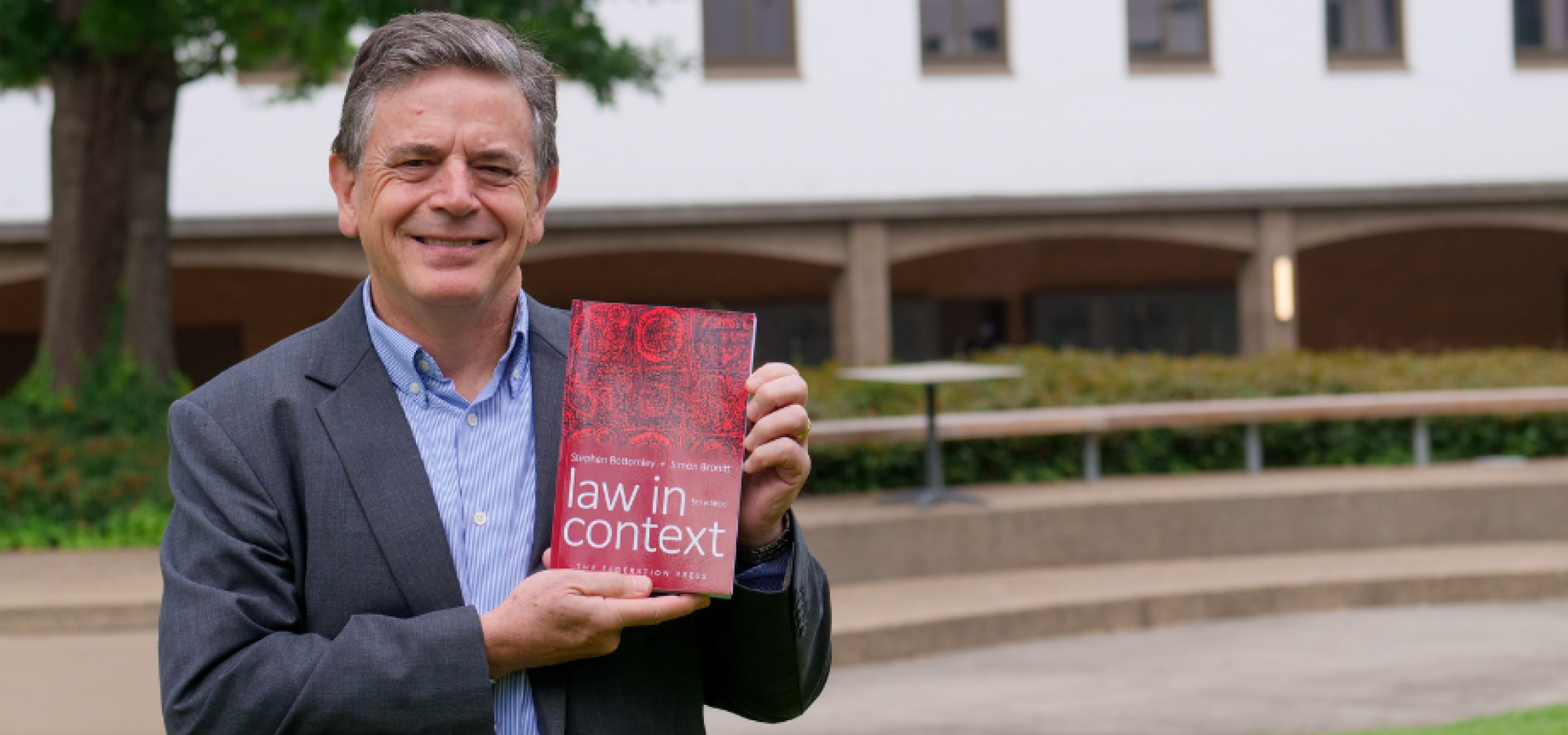
Emeritus Professor Stephen Bottomley's new co-authored textbook provides students with a contextual understanding of the law.
Our aim, as it has always been, is to assist students to understand that there is more to the law, and more to understanding the role of law in society, than they will learn in the cases and statutes that they study.
Emeritus Professor Stephen Bottomley FAAL and Professor Simon Bronitt (University of Sydney) have co-authored the fifth edition of a foundational legal textbook more than thirty years since the first edition was published in 1991.
Law in Context: Fifth Edition (The Federation Press, 2023) provides readers with a contextual understanding of the law and the legal system, from the history and evolution of legal concepts to the institutional limitations of law and justice.
The original book was based on a first-year Bachelor of Laws course, aptly named ‘Law in Context’, offered at The Australian National University (ANU) in the 1990s.
The first two editions were written by Professor Bottomley, Professor Stephen Parker and Emeritus Professor Neil Gunningham – all scholars at the ANU College of Law at the time.
Professor Bronitt, current Dean of Sydney Law School, was also working at ANU when he took over the reins from Professors Parker and Gunningham to collaborate with Professor Bottomley for the subsequent editions.
The fifth edition of Law in Context pays homage to this ongoing ANU connection with a photograph on the front cover of the carpet that, for decades, was in the Phillipa Weeks Staff Library in the ANU Law building.
The book has become an important resource for law teachers across the country in the thirty years since it was first published, either as a prescribed text or recommended course reading.
In this Q&A, Professor Bottomley delves into the book’s evolution, contemporary issues addressed in the current edition and its significance for law students.
How does this edition build upon previous editions of the book?
It has been about a decade since the fourth edition was published, so this new edition has involved a significant revision, updating and re-thinking of the book’s content.
Nevertheless, the core topics remain: introducing law students to a multi-disciplinary understanding of the law and ideas of justice, equality and the rule of law, and then investigating how those ideas play out (or fail to play out) in various contexts, particularly for first nations people, for questions of gender equality, for problems of access to justice.
The book also examines the role that practicing lawyers have as gatekeepers to the legal system. And, there is a new treatment of the rapidly changing impact of technology on how we understand and connect with the law.
The fifth edition includes a revised chapter on First Nations peoples, law and injustice. Can you elaborate on how it addresses contemporary issues?
We were very conscious that we were writing this at the same time as the debate about the Voice to Parliament was making people think about First Nations people and rights, equality and the law. So, we have tried to put that debate (and the outcome of the referendum) in context – historically, philosophically, politically and sociologically.
The book also has an updated chapter on gender equality, which includes new material on intersectionality and transgenderism. How does this reflect the evolving landscape of legal discussions on gender, and what motivated the inclusion of these specific topics?
Each edition has dealt with issues of gender and the law. This time, we were very aware that feminist debates about, and critiques of, the law are now occurring in the wider context (see how often that word comes up?) of sexual and gender identity. We included this discussion because it is so important to many law students and their personal experience of studying the law.
What do you hope readers will gain from the book?
The book is aimed at law students – primarily those in the first year of their studies, but also later year. Our aim, as it has always been, is to assist students to understand that there is more to the law, and more to understanding the role of law in society, than they will learn in the cases and statutes that they study.
The book constantly explores the difference between ‘the law in the books’ (the rules, doctrines and procedures that form the basis of legal education) and ‘the law in action’ (why it is that the law deals with some topics but not others, why some groups in society gain more from the law than others, why knowing the law is not always the answer).
We hope that the book will prompt students to always be asking ‘why is the law the way it is?’, ‘why do some people benefit more from the law than others?’, and ‘what can I do about that?’